Concept
The Concept of the Comfort
くつろぎ コンセプト
ピュアな美味しさ。食べた瞬間に笑顔になる味。
日本各地より届けられた新鮮な食材たち。
余すところなくその日のうちに使い切る料理人。
元気の良いサービスを心掛けて、楽しんで頂けるように。
年齢制限を設けていないのでご家族全員でご利用いただけます。
Genuine taste.
The taste making everyone smile instantly.
The fresh materials arriving from all over Japan.
Chef who uses all the materials up on the day of the arrival.
Serve with brightness and eagerness for the guests.
What is L’asse?
ラッセとは
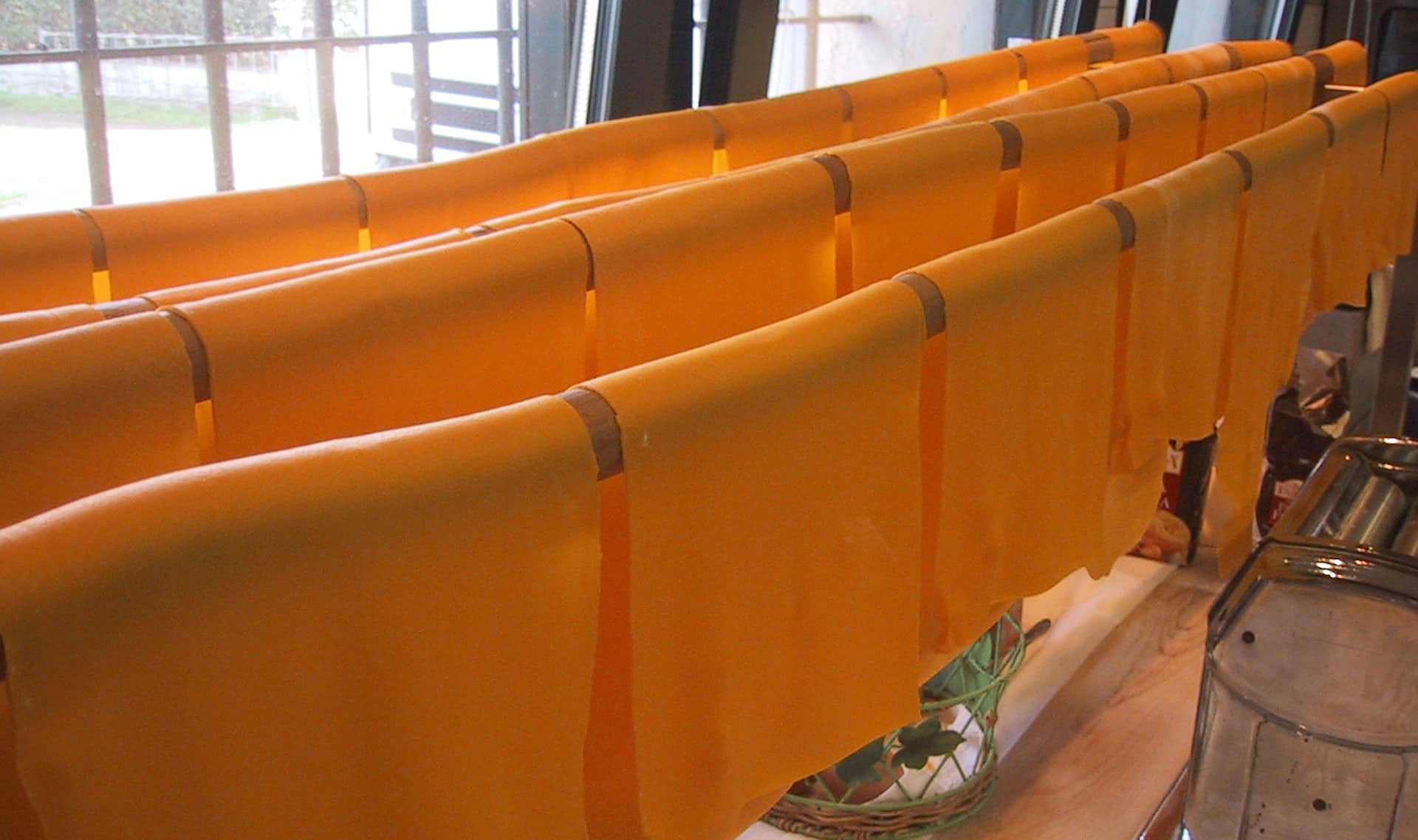
イタリア料理の基礎、根源は母親が作る愛情の料理です。
日本料理やフランス料理の様にその国の体系立てた形式は一切なく、各家庭のそれぞれの味が本物のイタリア料理なのです。
村山が働いていたダルペスカトーレでも、ブルーナおばあちゃんとシェフでもありお母さんのナディアが厨房を取り仕切っています。
手打ちパスタや焼き菓子など粉をこねる料理が多い母親の味は、大きな一枚の木の板の上で作られています。
この板をASSEと言い、定冠詞を付けL’asseと呼んでいます。
The base of the Italian cooking is the mothers’ taste. There is no systematization of the Italian cooking, unlike the French and the Japanese cooking. Each family has its own taste which is genuine. At Dal Pescatore where Murayama worked,
the chef and mother Nadia and Grandmother Bruna preside over the kitchen. Homemade pasta or baked sweets are made on a large wooden board named “Asse” usually called “L’asse”.
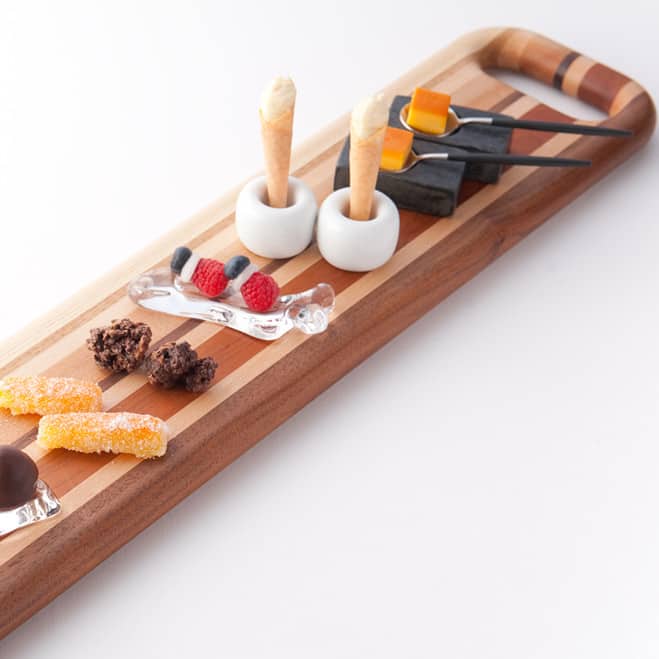
イタリアでは、レストランの家庭に子供が生まれると庭にモミの木を植えます。子供の成長と共に木は大きくなり、厨房では使われているASSEは年季を増していきます。
幼少期より厨房で育っていきながら祖母、母の味を教わります。子が大学を卒業し、本格的に我が家の厨房で働き始めるころには、すでに一人前の料理の腕と家族からたっぷりの愛情を注がれて育った次世代の大人になっています。
そして、その時には母から子へと料理の伝承がASSEにより行われています。20数年間働いてきたASSEはすり減り、役目を終えようとしています。解体され使える所はスパチュラや手打パスタを乾す木の棒、作ったラヴィオリを保管する木の箱に造り変えられます。
In Italy the family which runs a restaurant, plants a baby fir tree in the garden, at the birth of a child. The tree grows up with a child, while Asse in the kitchen becomes well-used and indispensable. The child starts learning the taste of grandmother and mother from the infancy. After finishing the school education, and coming back to the home, he is already a skilled cook, full-fledged receiving the deep affection of the family.
The alternation of generation goes with the change of Asse. The Asse working for more than twenty years is worn out, almost finishing its role. It is taken apart, some part becoming a spatula, a bar for drying the pasta or for a box preserving the ravioli.
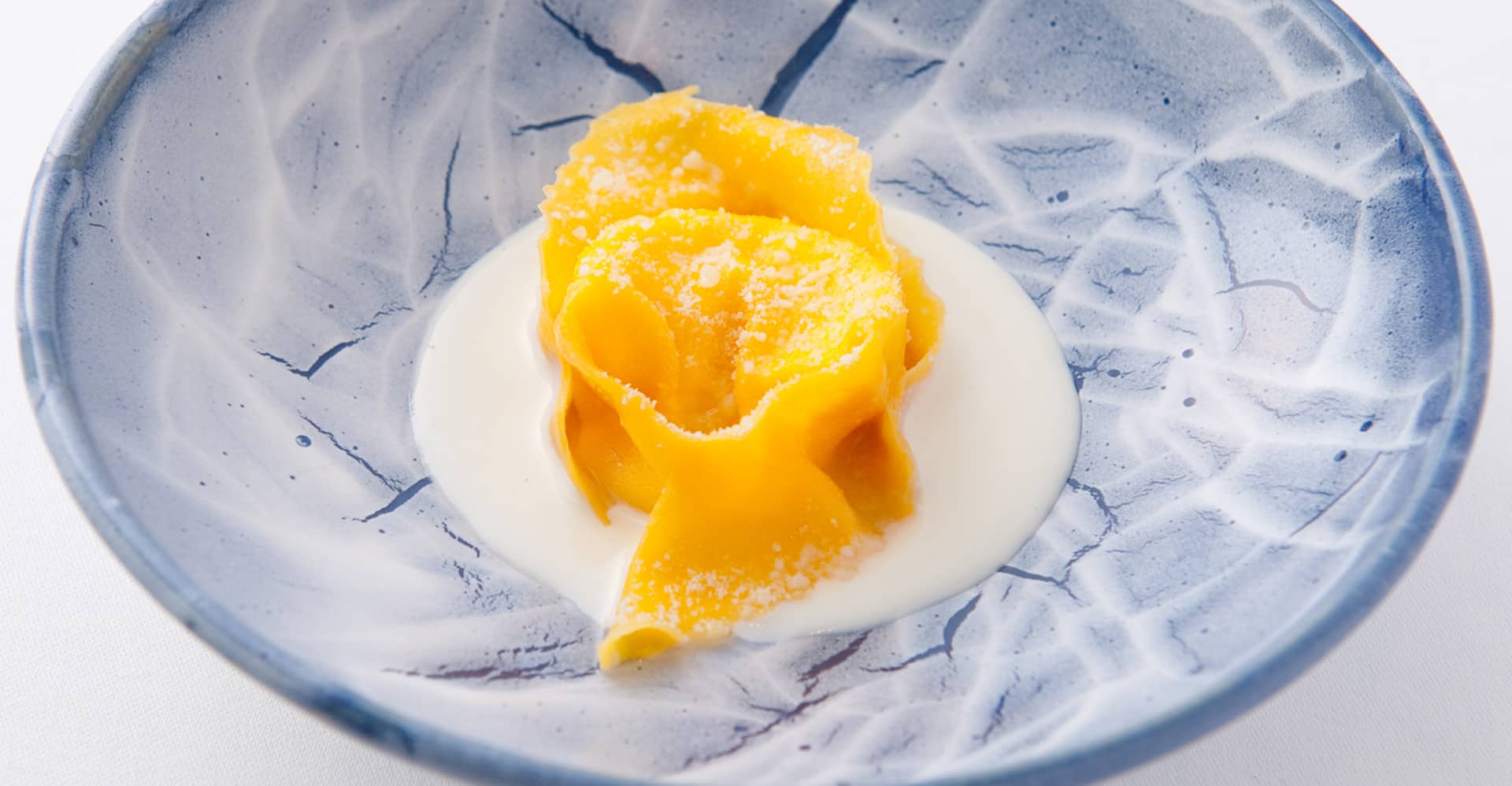
残った木の破片はクリスマス時期に暖炉にくべる薪になり、家族にぬくもりを与えその役目を果たし切ります。そして、子供が生まれた時に植えられ育てられてきたモミの木を加工し新しいASSEとして迎え入れ世代交代になります。
脈々と受け継がれる母の愛情と、家族の暮らしを支える基礎がASSEなのです。
The remaining part is used as wood for a fireplace in the Christmas season and finishes its role as the giver of warmth to the family. Then the new Asse is made of the fir tree planted at the birth of a child. The alternation of generation is completed. Asse supports the family life and the deep love of mother, which has been handed down from generation to generation.
Succession and transmission
受継ぎ、伝えていくこと
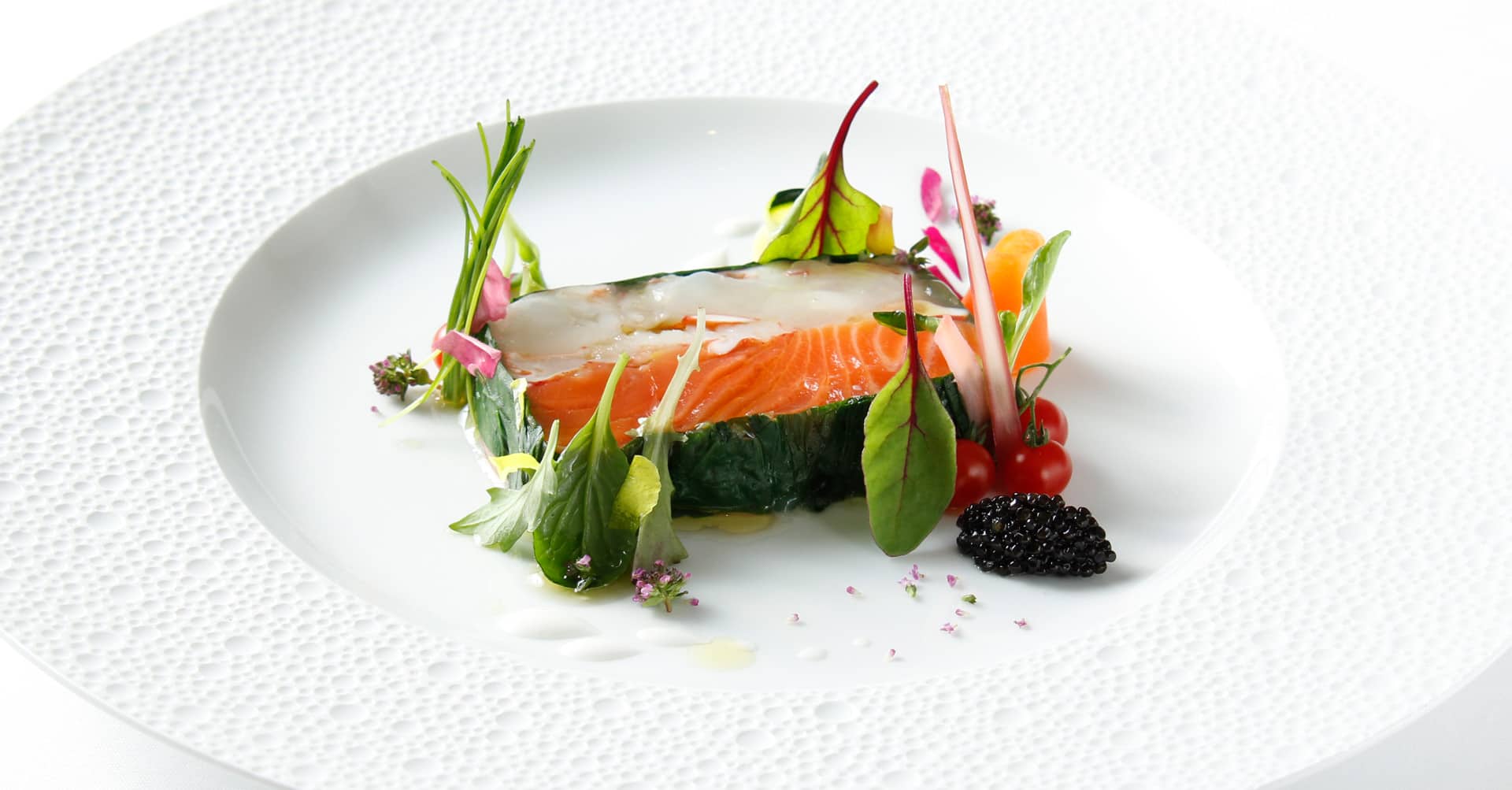
村山が師事した、ダルペスカトーレのナディアから料理の技法、考え方、アプローチ方法、食材の扱い方など沢山の事を教わりました。
とりわけ大切にしている事が、旬の最高の食材を、最も鮮度の良い状態で使い切ることです。ダルペスカトーレでは裏庭に畑があり野菜を育て、川が流れ川魚を取り、鴨、アヒル、鶏など鳥たちを飼い産みたての卵をその日のうちに使っています。
ラッセも、野菜は取れたて、自然に育てた鳥たちの卵は産みたてを毎日送ってもらい、魚は淡路島や焼津など漁師さんより直送して頂いています。肉は職人の絶妙な熟成を施したものを仕入れ、美味しいと感じられる最大限を引き出します。
Murayama learned a lot from Nadia Santini of Dal Pescatore. On technique, concept of the cooking and how to approach and treat the materials. The most important thing is to use up the best material of the season in the freshest condition. At Dal Pescatore in the back yard they grow vegetables and take fish from the river near the yard. They keep ducks and chickens and consume their new-laid eggs on that day. At L’asse also, all the vegetables come fresh from the farmers and new-laid eggs of the chickens naturally raised are sent to the kitchen every day. The fish comes directly from Awaji Island and Yaizu. We buy the meat exquisitely aged by the skilled butcher, so that we can extract the very best essence of the taste.
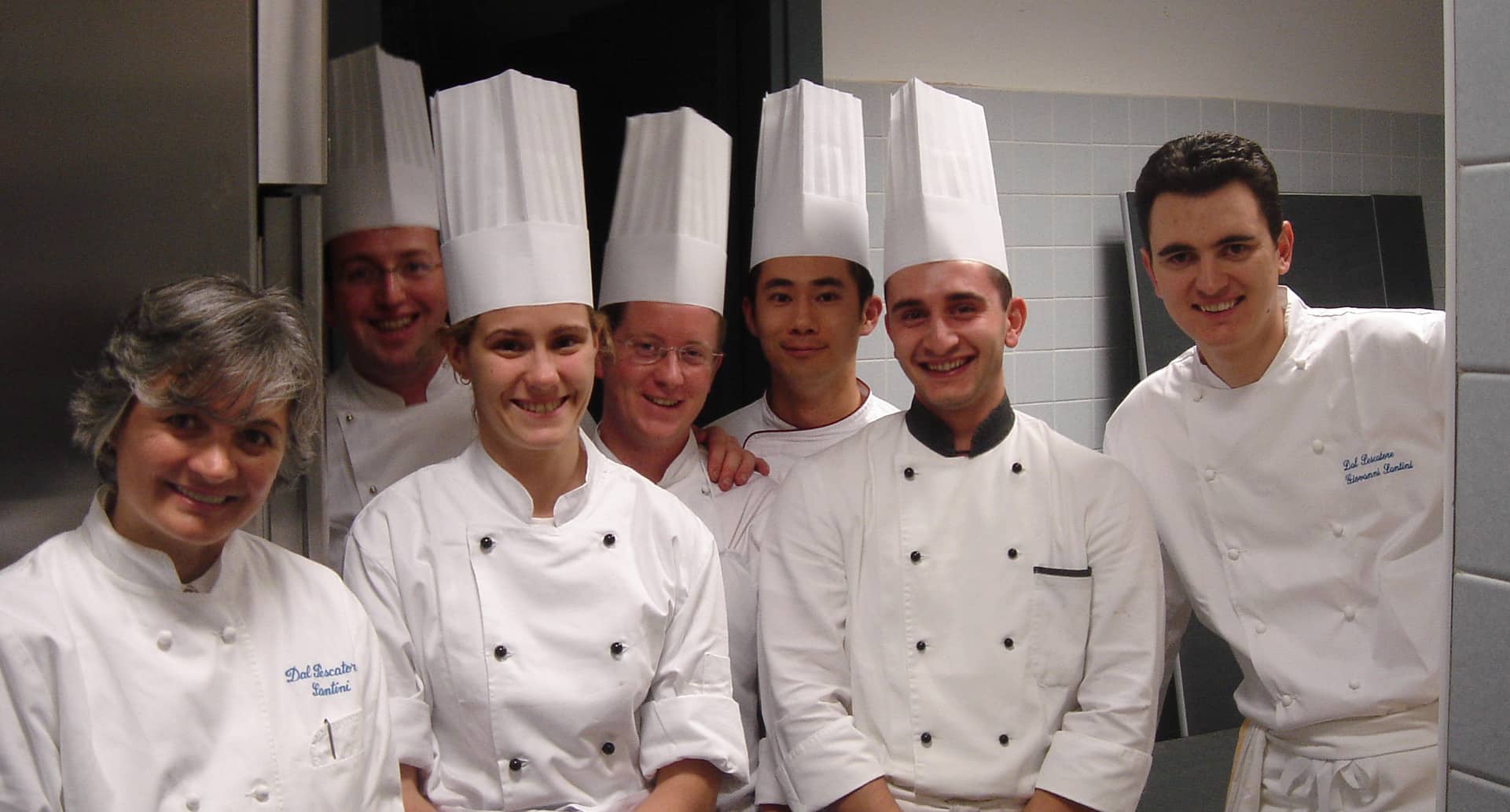
ラッセではよく、日本料理みたい、懐石料理みたいと言われます。
それはやはり日本の最高の素材たちの力だと思います。
塩、アンチョビはサルデーニャ島。オリーブオイルはシチリア島の物を使っています。それ以外の素材たちは、ほぼ日本産になります。毎日熊本から届く素晴らしい香りのある生クリーム、そこから営業時間ぎりぎりに合わせてラッセの厨房でバターを手作りしています。残ったミルクバターからは手作りリコッタチーズを作りラヴィオリに包んでいます。さらにその残りの乳清で野菜を茹でたりしています。素晴らしい素材は一滴たりとも逃したくないのです。このように日本全国の四季折々の豊かさをナディアから受け継いだイタリア料理の真髄を日本ならではの素材と味の追求、そして次世代に伝えていかなければなりません。
Some guests comment L’asse’s cuisine is like Japanese cuisine, especially the tea-ceremony dishes. That is because we use the best material of Japan. Except the salt and anchovy from Sardinia Island and olive oil from Sicily Island, all the materials are Japanese products. Every day we make butter from the wonderfully flavored fresh cream from Kumamoto, at the last moment before opening the restaurant. The remaining milk butter is made into Ricotta cheese, becoming the ingredient of ravioli. With the last remaining of whey, we boil the vegetables. We do not want to waste any drop of the fresh material. The essence of the Italian cooking inherited from Nadia must be transmitted to the next generation, by pursuing the taste unique to Japan, a country very rich in the seasonal materials.
Restaurant
店内

店内は、村山の出身地新潟県十日町の山奥にあるブナ林、白樺林を表現しています。都会でありながら、さながら森林浴をしながらゆったりと寛いで頂けるような内装となっております。
The interior of the restaurant expresses the beech and the birch woods of Tokamachi, his home town in Niigata Prefecture. Although staying in the middle of the city, the guests could relax just as if they enjoy forest bathing.